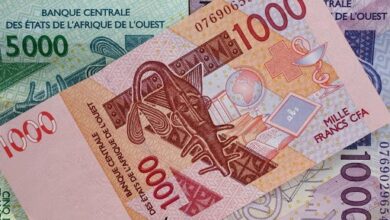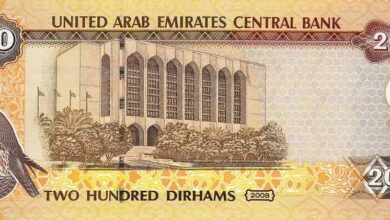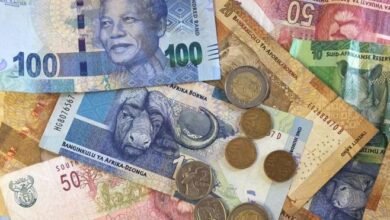Ghana Cedi To Naira Official CBN and Black Market Exchange Rate Today
What is Ghana Cedi To Naira Official and Black Market Exchange Rate Today?
In recent years, the value of the Nigerian currency has decreased relative to that of other major currencies.
The rate at which one Ghanaian Cedi can be exchanged for one Nigerian naira is subject to continuous shifts according to market forces.
In the most recent few months, there has been a general decrease trend in the rate. Even if the market goes through ebbs and flows, the exchange rates for today show that it has remained low throughout this time.
How much is one Ghanaian cedi worth in terms of Nigerian naira according to the Abokifx and the black market, also known as the parallel market? The current real exchange rate for the Ghanaian Cedi to the Nigerian Naira will be discussed in this article.
Ghana Cedi To Naira Black Market Exchange Rate
Black Market Rate of the Ghanaian Cedi to the Nigerian Naira Today We provide you with the actual conversion rate so that you can make significant cost reductions on any foreign money transfers you make.
The following table provides a breakdown of the current Ghanaian Cedi to Nigerian Naira black market rate.
| Ghanaian Cedi to Naira (GHC to NGN) | Black Market Exchange Rate |
| Buying Rate | 53.11 |
| Selling Rate | 55.10 |
Black market exchange rate for Ghanaian cedis to Nigerian naira (GHC to NGN) today: buying rate 53.11 and selling rate 55.10. As of right now, the Naira trades at N 735 to $1 on the parallel market while abokiFX clears the relevant forex information.
Ghanaian Cedi To Naira Official CBN Exchange Rate
The Central Bank of Nigeria (CBN) and other commercial banks use a different exchange rate than the black market does for Ghanaian cedis to naira. This difference exists today.
The exchange rate that is displayed on the official website of the Central Bank of Nigeria, which can be accessed at www.cbn.gov.ng, is known as the CBN rate. At this rate, you can buy or sell Ghanaian Cedis in exchange for Naira.
The exchange rate offered by the Central Bank of Nigeria (CBN) for the Ghanaian cedi is almost always lower than the rate offered by the black market.
| Ghanaian Cedi to Naira (GHC to NGN) | CBN Exchange Rate |
| Buying Rate | 32.41 |
| Selling Rate | 32.49 |
The Nigerian Naira
The Nigerian Naira currency symbol is: ₦ and the currency code for the naira is NGN. One naira can be broken down into one hundred kobos using this currency, which is the standard unit of trade in Nigeria.
The Nigerian Naira is issued by the Central Bank of Nigeria (abbreviated as CBN), which is the monetary authority for the entire nation. Also known as the apex bank of the country, it is the only entity that has jurisdiction over the management of this form of legal money (CBN).
The Currency and Branch Operations Department of the Central Bank of Nigeria is the division of the CBN that is solely responsible for the task of currency production.
They are also charged with the duty of currency management, distribution/supply, through the procurement, processing, reissue, and disposal or disintegration of banknotes and coins.
Moreover, this department is tasked with the responsibility of ensuring the safety of the nation’s currency.
Not only does it print stamps, but it is also in charge of printing banknotes and postal orders for Nigeria.
This is because the Nigerian Security Printing and Minting Company Limited is the mint and printer for Nigerian banknotes. In addition to printing stamps, it is also responsible for printing Nigerian banknotes.
Because the government of the Federal Republic of Nigeria retains virtually the majority of the company’s rights, the Nigerian Security Printing and Minting Company Limited have facilities in both Abuja and Lagos, which are both in Nigeria.
Interesting Facts About The Naira
One Naira
It was produced in the form of a coin. The late Chief Obafemi Awolowo, who was Nigeria’s Federal Commissioner of Finance at the time, is credited with making the first coin out of copper and giving it the name “coin.”
This name was viewed as an important step in expressing Nigeria’s independence from the control of her colonial history, and it was adopted as part of that process.
The Late Herbert Macaulay, who passed away, is honoured with his likeness on the one-naira coin. May he rest in peace.
The launch of this legal currency, which was an advantage to the national economy because the coin held worth in terms of its purchasing power until much later when the economy of the nation entered a time of recession, was a source of national pride.
Five Naira
The five naira note has a portrait of Sir Abubakar Tafawa Balewa, who served as Nigeria’s first prime minister.
On January 1, 1973, it was first executed into the economy of Nigeria. And later redesigned in 2007 from its initial form, which was a polymer note, to a paper note, changing it from its initial form.
The picture shows Nkpokiti dancers from Southern Nigeria from the back, and it was taken there. It is crazy to learn that this currency may buy very little or nothing at all in modern-day Nigeria, yet it still maintains its usefulness in the market system despite this fact.
Ten Naira
It is a dark red colour, and it bears an image of Alvan Ikokwu on it. It was initially intended to be a paper note, but later it was redesigned to be made of polymer instead. On it are depictions of Fulani milkmaids dressed in traditional clothing.
These women collect milk and other dairy products from farm animals, most notably cows. The name of the currency is written in several different languages, including Hausa, Igbo, and Yoruba, among others. Alvan Ikokwu was born in 1900.
Twenty Naira
On the portrait of the Twenty Naira note is an image of General Murtala Mohammed, who served as Head of State before his death. It is the very first and only piece of paper currency to ever have an image of a woman, and she is shown here as the Ladi Kwali.
In 1925, Ladi Kwali was born in the hamlet of Kwali, which is located in the Gwari region of Northern Nigeria. In this region, indigenous women traditionally labour in the arts, particularly in the field of ceramics.
Because of the extraordinary beauty and decoration of her works, she became known and celebrated throughout the region as a talented and eminent potter. This led to her being recognized as a regional treasure.
Her designs and works were purchased by anyone and everyone within the country and beyond, which had the effect of generating cash for her and the community she was a part of. A diverse Emir showed his appreciation for Ladi by purchasing her wares.
This hardworking woman was honoured with a variety of awards, including the Nigerian National Order of Merit Award (NNOM) in 1980, which is the highest national honour for academic achievement, and the Member of the Order of the British Empire (MBE) in 1962.
She excelled in her field more than any of her contemporaries.
Fifty Naira
The Nigerian currency known as the fifty Naira reflects the country’s rich cultural heritage. It is in a polymer form rather than a paper form, and it displays the major ethnic groups in a display, which are Hausa, Igbo, Yoruba, and Ibibio.
Also, it is in a display format. It was first distributed in 1991, but in 2007 it received a brand-new look.
This money, in addition to depicting a member of a local tribe, also features images of the fishing festivals that are traditionally held in the nation (Arguing fishing festival in Kebbi state Northern Nigeria).
One Hundred Naira
It was released for the first time in 1999 and has a photograph of the late Chief Obafemi Awolowo. Many people in the country look up to him as a political hero and recognize him as a true Nigerian because he fought for the independence of the country when it was still under colonial rule.
A new design of the one hundred naira note was introduced by President Goodluck Ebele Jonathan to coincide with the celebration of the one-hundredth anniversary of the founding of the nation of Nigeria.
Two Hundred Naira
This paper note currency is green all over, just like the twenty-naira note, which is another similarity between the two currencies. It was first printed in the year 2000, and it features a portrait of the late Alhaji Sir Ahmadu Bello, who served as the premier of northern Nigeria at one time.
Five Hundred Naira
On the first 500 naira note, which was produced for the first time on April 12, 2001, the image of Dr Nnamdi Azikiwe, who served as Nigeria’s first president, can be seen.
One Thousand Naira
The majority of people refer to this currency as the Nigerian dollar. This note features the portraits of the Late Dr Clement Isong, who served as the governor of the Central Bank of Nigeria, and the Late Alhajji Aliyu Mai-Bornu.
The note also has a positive outlook and a silver lining. Paper in appearance, this currency note was initially distributed on October 12, 2005, and it holds the position of being the country’s final highest currency note.
On the reverse of the one thousand naira bill is a picture of the headquarters of Nigeria’s central bank, which is the highest-ranking financial institution in the country.
The Ghanaian Cedi
The Ghanian Cedi can be represented on a currency scale by the symbol GH₵ and can be written out using the code GHS.
The Ghana cedi is the country’s main unit of currency, and it is subdivided into a hundred smaller units called pesewas (Gp).
The present version of the Ghanaian cedi is the fourth and only currency that may be used for transactions legally.
The value of the Naira is shown by the fact that the exchange rate of one cedi to one naira is not very favourable, which highlights the Naira’s weakness in the global currency market.
Even so, this does not necessarily make the Cedi a more powerful currency than the Naira.
If a currency with a larger number is swapped for one with a smaller number, this does not indicate that the currency with the larger number is worth less than the currency with a smaller number.
To begin, the Ghanaian cedi has been subject to scrutiny throughout recent history. As part of this process, the Bank of Ghana has been removing zeros from the back of the currency to make the corresponding figures more compact.
As this is the fourth Ghanaian Cedi, each unit of this Cedi has several undetectable Zeros at the back of it.
The current unit of the cedi would be withdrawn from circulation and replaced with a brand new unit by the Bank of Ghana at any time the inflationary burdens increased within the nation and the value of the cedi appreciated to an unacceptable degree in comparison to other currencies used internationally.
This is something along the lines of what the former Governor of the Central Bank of Nigeria, Charles Soludo, suggested during his tenure when he was in office.
In the foreign exchange market, the factor that is most important to consider is the amount of purchasing power that is associated with each currency.
For instance, one cedi can be purchased for thirty Japanese yen, but this does not necessarily imply that the cedi is more valuable than the yen, given that the yen possesses a higher purchasing power.
Ghana Cedi to Naira Exchange Rate Frequently Asked Questions
Is one cedi equal to more than one dollar?
As of 2022, the Ghanaian Cedi, which is the country’s official currency, had the poorest performance of any currency in the world, having experienced a decline in value of 45.1% relative to the dollar.
Are products more affordable in Ghana than in Nigeria?
Ghana has a cost of living that is 42% lower than Nigeria’s (1008 dollars), where the average cost of living is $581.
On the list of countries rated from most to least costly to live in, Ghana came in at 149, while Nigeria placed at 63. In Ghana, the average pay after taxes is sufficient to cover monthly living expenditures for 0.6 months, but in Nigeria, it only covers monthly living expenses for 0.2 months.
Why does the Naira continue to lose its value?
According to market analysts, the action taken by the central bank was the cause of the further devaluation of the naira on the black market. This occurred because holders of illicit funds attempted to convert cash stacked outside of banks into dollars, which further drove up the exchange rate.
Conclusion
It is important to be aware that the Central Bank of Nigeria does not recognize the black market (also known as the parallel market), and the bank advises individuals who are interested in foreign exchange to get in touch with their banks before making any transactions.




